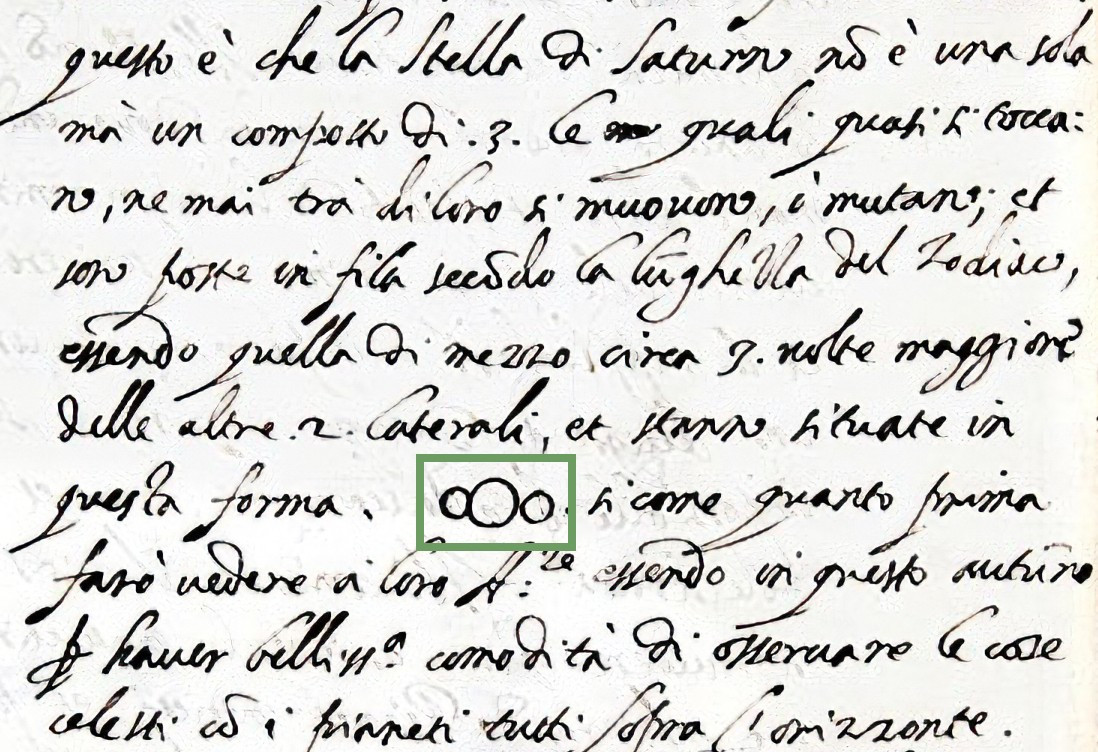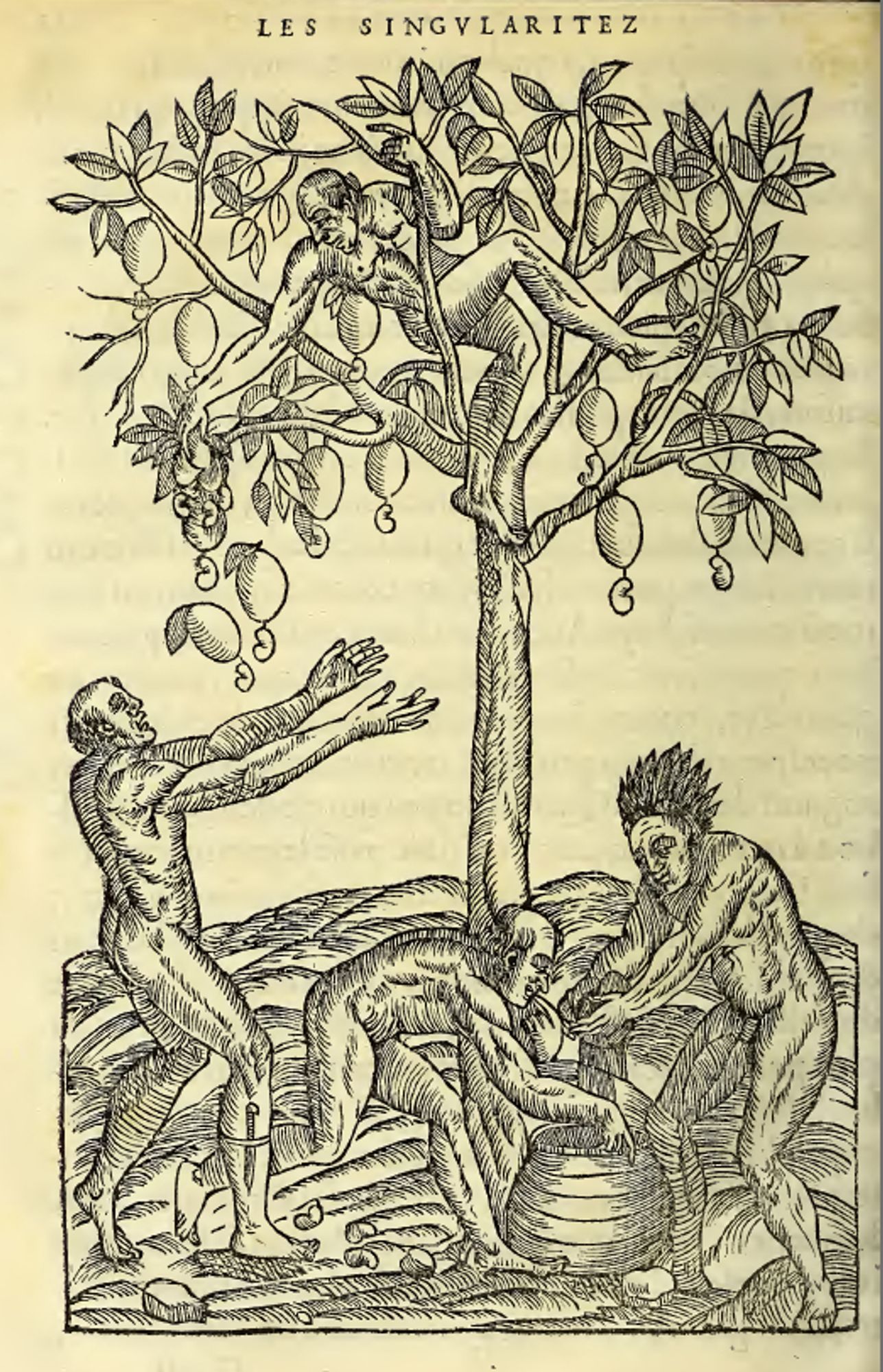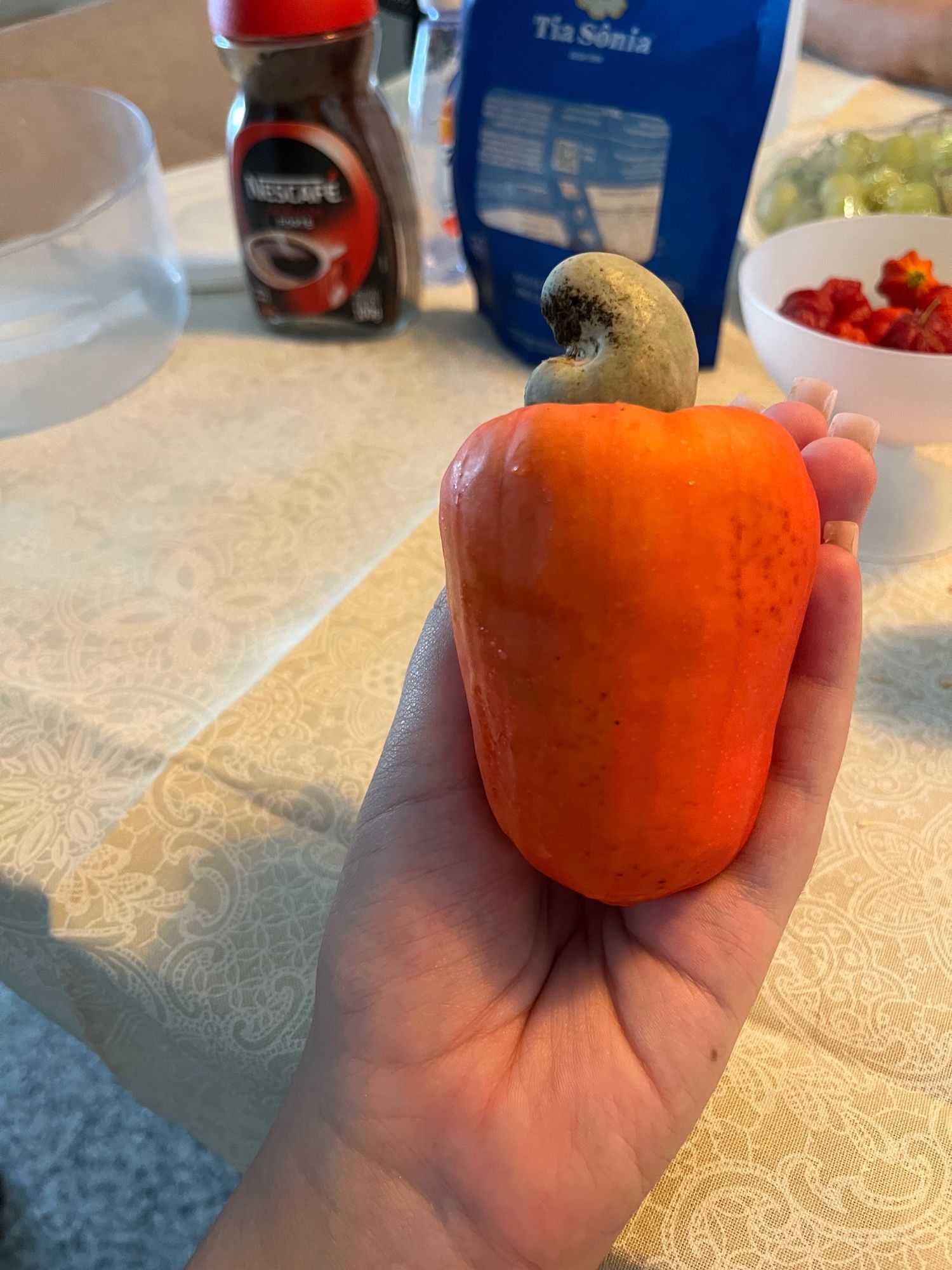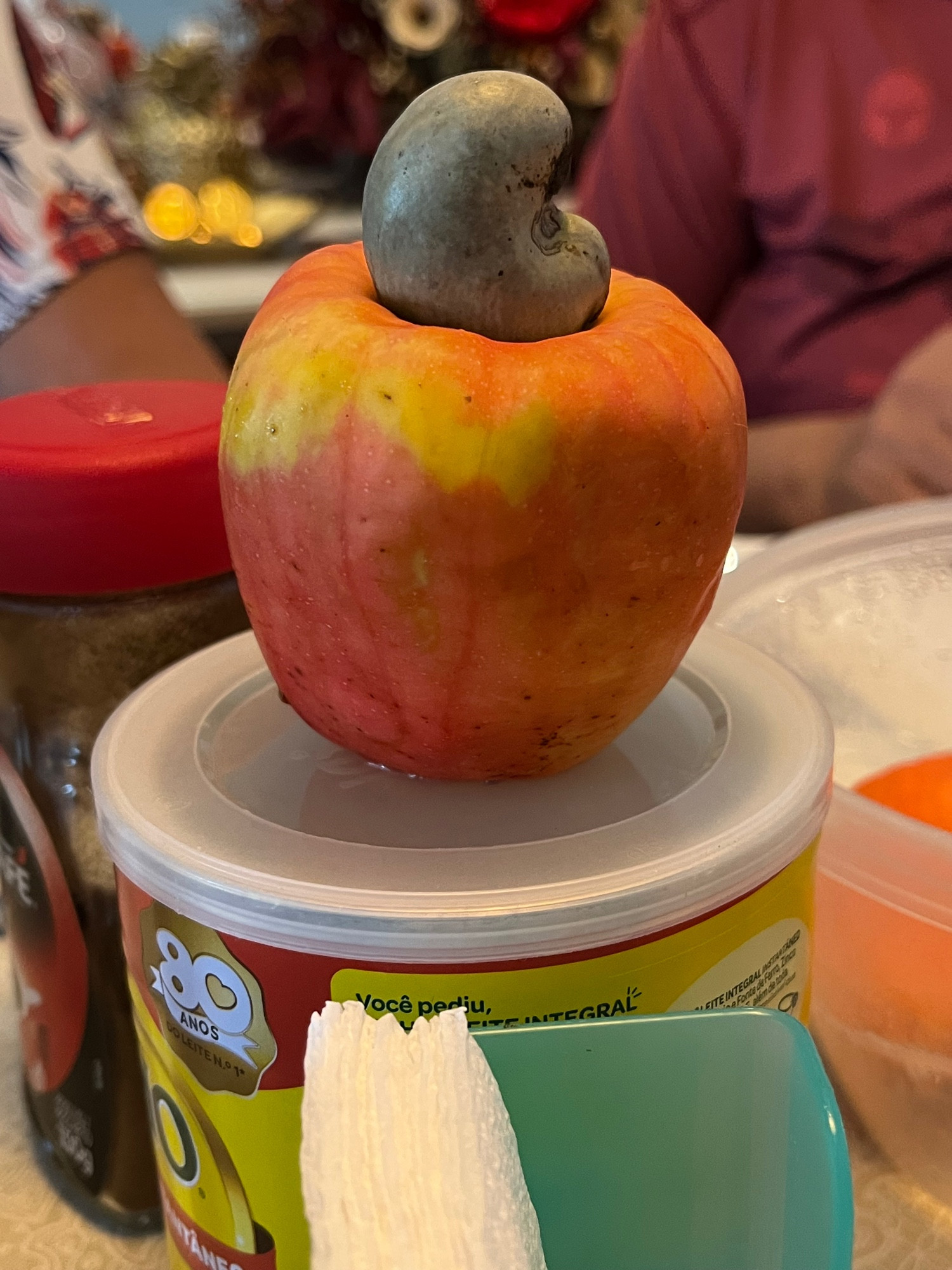
I agree with this. I don't use Duolingo that much—mostly because most of the languages I want to learn aren't on it—but it seems fine to me. Duolingo won't teach you the rules of a language as such, but it can help you learn vocab and hone your intuitions. That's pretty good imo.
Today I learned that when Galileo Galilei first observed the rings of Saturn on his telescope (in 1610) he did not realise they were rings, but called them "Saturn's ears". Here's his diagram of what he could see, in a letter to Belisario Vinta:

I'm trying to limit my Tupi posting on here. I won't post anything until I'm prompted to by the serendipitous appearance of a Tupi-adjacent post on my timeline. I don't want to overwhelm you all with Tupi things. And I don't want to get bored myself.
I think I might eat several quindins today.
The word 'cashew' comes from the Tupi word "akaîu" (in Eduardo Navarro's spelling system), pronounced /aka'ju/. I *think* the pirate William Dampier was the first person to use the spelling ⟨cashew⟩ in English, in his 1703 "Voyage to New-Holland" (p.68). (But I could be wrong.)
Here's an early depiction of a cashew tree (*Anacardium occidentale*) from the 1558 Paris printing of André Thevet's "Les Singularitez de la France Antarctique" (f.120v). Thevet used the spelling ⟨Acaïou⟩ in reference to the plant—probably an accurate transcription of the Tupi word.

The word 'cashew' comes from the Tupi word "akaîu" (in Eduardo Navarro's spelling system), pronounced /aka'ju/. I *think* the pirate William Dampier was the first person to use the spelling ⟨cashew⟩ in English, in his 1703 "Voyage to New-Holland" (p.68). (But I could be wrong.)
Delighted* to say that video & audio recordings of my recent RHS talk on early 17thC Indigenous Tupi travellers to France from Brazil are are now available online for anyone who missed it. 🗃️ *Not actually delighted to see myself on film. Erk. 🙈



